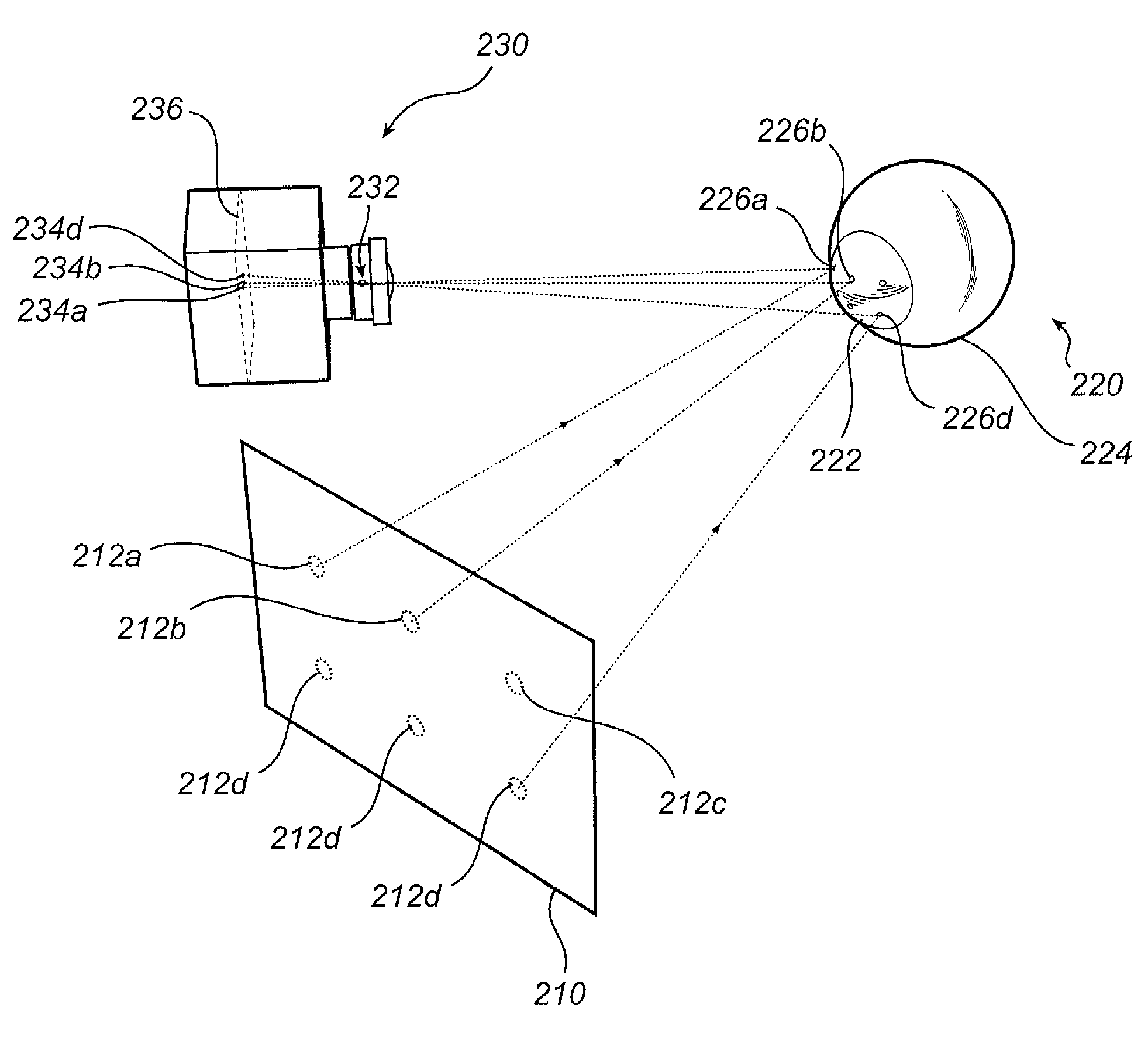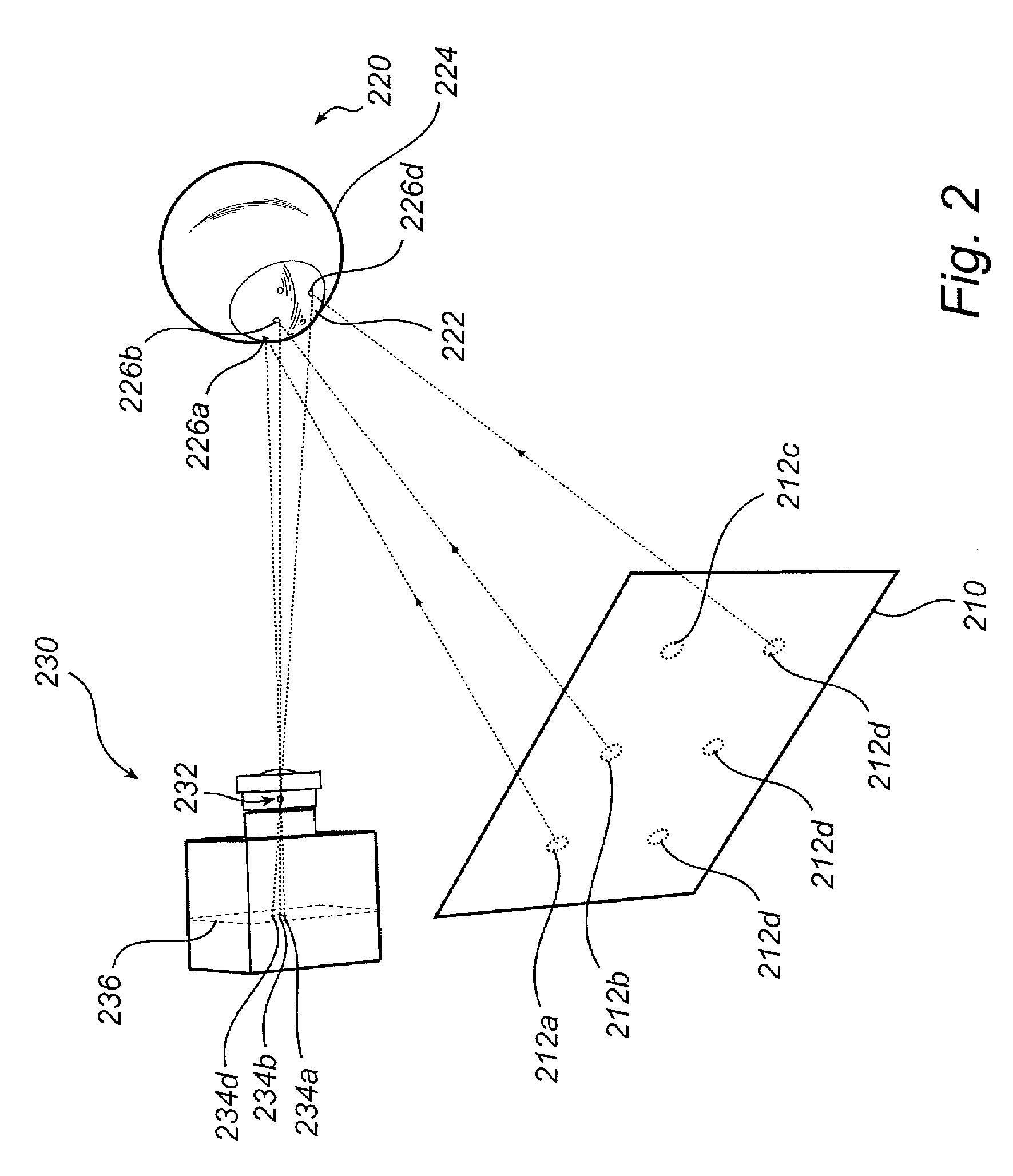Eye-tracking using a GPU
a gpu and eye tracking technology, applied in the field of eye tracking, can solve the problems of inflexibility to belong to the standard equipment of new laptops, inability to include eye tracking capabilities, and inability to solve problems such as inability to solve eye tracking problems, and achieve the effects of avoiding aliasing-related artefacts, facilitating geometric deformation measurements, and easy extraction
- Summary
- Abstract
- Description
- Claims
- Application Information
AI Technical Summary
Benefits of technology
Problems solved by technology
Method used
Image
Examples
Embodiment Construction
[0027]The structure of a motherboard in a typical personal computer will now be described with reference to FIG. 1. The chipset, or core logic, of the computer consists of the northbridge 101, or (integrated) memory controller, and the southbridge 102, or input / output controller hub. The northbridge 101 and southbridge 102 are communicatively connected by the internal bus 150. The southbridge 102 is generally used as an interface for devices with lower data rates than the northbridge 101. Thus, in this example, the southbridge 102 is connected to a basic input / output system (BIOS) 130, Integrated Drive Electronics (IDE) bus 131, an Industry Standard Architecture (ISA) bus 132, another legacy interface 133 to provide backward compatibility, a Peripheral Component Interconnect (PCI) bus 134 and a USB interface 135. The northbridge 101, which generally handles high-speed devices, is connected to a CPU 110 via a front-side bus 152 and to a random access memory unit 120 via a memory bus ...
PUM
 Login to View More
Login to View More Abstract
Description
Claims
Application Information
 Login to View More
Login to View More - R&D
- Intellectual Property
- Life Sciences
- Materials
- Tech Scout
- Unparalleled Data Quality
- Higher Quality Content
- 60% Fewer Hallucinations
Browse by: Latest US Patents, China's latest patents, Technical Efficacy Thesaurus, Application Domain, Technology Topic, Popular Technical Reports.
© 2025 PatSnap. All rights reserved.Legal|Privacy policy|Modern Slavery Act Transparency Statement|Sitemap|About US| Contact US: help@patsnap.com



